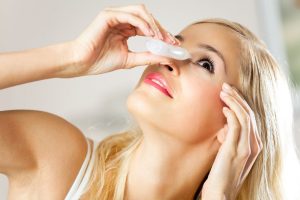Preparing for LASIK Surgery
June 16, 2015Meibography Video Visualization – New Jersey – Eye Care Practice
August 17, 2015At the Laser Vision Correction Center of New Jersey, we provide a comprehensive range of advanced eye care services, from custom blade-free LASIK to the most technologically innovative methods of diagnosing and treating serious eye conditions. One potentially serious eye condition that is often dismissed as being merely irritating is dry eye syndrome. We are pleased to offer the absolute gold standard in the diagnosis of dry eye syndrome, tear osmolarity testing, at our New Jersey eye care clinic.
The TearLab® tear osmolarity testing system is the most accurate and effective tool for diagnosing dry eye available. It not only allows our eye care professionals to provide timely and precise diagnosis of dry eye syndrome, but also to track the efficacy of the therapies we use to treat dry eye. It truly is one of the most valuable pieces of technology we have ever integrated into our practice.
If you have chronically dry, itchy, red eyes, we urge you to visit our practice for a comprehensive eye exam, including tear osmolarity testing, as soon as possible. By detecting and treating dry eye syndrome in its earliest stages, our eye care professionals can help you to maintain good ocular health for a lifetime.
What is tear osmolarity?
Tear osmolarity refers to the amount of salt contained in the tears produced by the eyes. The higher a person’s tear osmolarity, the more likely he or she has dry eye syndrome. The salt content of a person’s tears is only one possible indicator of the condition; however, it is probably the most telling indicator, especially if other risk factors are present.
Why is dry eye syndrome potentially dangerous?
There is no question, particularly among people who have experienced dry, itchy eyes, that dry eye syndrome can be irritating and highly annoying. However, can it be dangerous to your ocular health? It absolutely can, especially over time. Your tears serve several important purposes:
- First and foremost, they lubricate the surfaces of your eyes, facilitating the movement of your upper eyelids and protecting your cornea from the sort of friction that could result in irritation and permanent scarring.
- They also provide the eyes with nourishment that helps to keep them healthy and to keep vision clear and sharp.
- Finally, and perhaps most importantly in the long run, they help to ward off infection and other sources of disease.
Without adequate tear production, your eyes becomes highly vulnerable to damage and disease.
How does TearLab® work?
The TearLab® system works by providing our team of eye care experts with an osmolarity number. This number is objective and unquestionable; it simply states how much salt is contained in your tears. A very tiny tear sample is required, and no anesthesia or invasive techniques are needed to retrieve that sample. In a matter of seconds, your osmolarity number will be produced. Based on how high that number is, and its relation to other data, we will be able to diagnose whether you have dry eye syndrome. We will use this information to arrive at the most appropriate treatment plan.
Learn More about Tear Osmolarity Testing
To learn more about tear osmolarity testing using the TearLab® system, please contact the Laser Vision Correction Center of New Jersey today.



